Best free iPad apps 2023: the top titles we've tried
The best free music and audio apps for iPad
Why you can trust TechRadar
Our favorite free iPad apps for listening to podcasts, making music or being a virtual DJ.
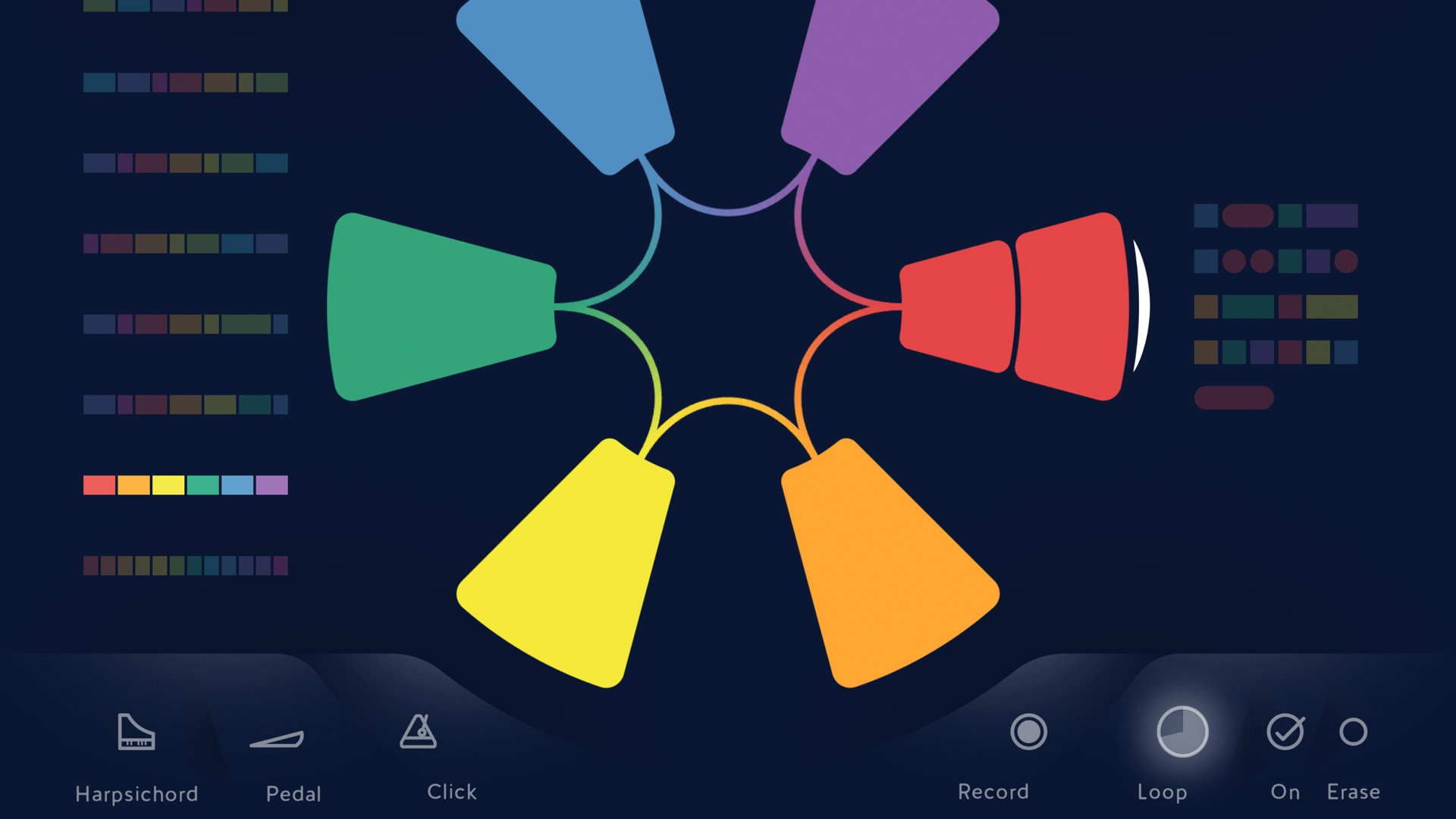
musicLabe
musicLabe is designed to make playing music easier, by rethinking how you interact with an instrument. What you get on the screen is a piano of sorts, but the keys are brightly colored and organized around a circular center you can rotate. Each note aligns to a mood (actually a scale) that you select – and that makes it very hard to play a bad note.
Because its notes are not in the order found on a traditional piano, musicLabe invites experimentation. Its bold interface and structure also makes for a relaxing experience, especially on the iPad’s larger display.
Should you wish to go deeper, a basic but effective looper lets you build layers of audio, and you can record your output to share it with others. IAP adds new views, centered around inspiration and educational labels describing your chosen scale.
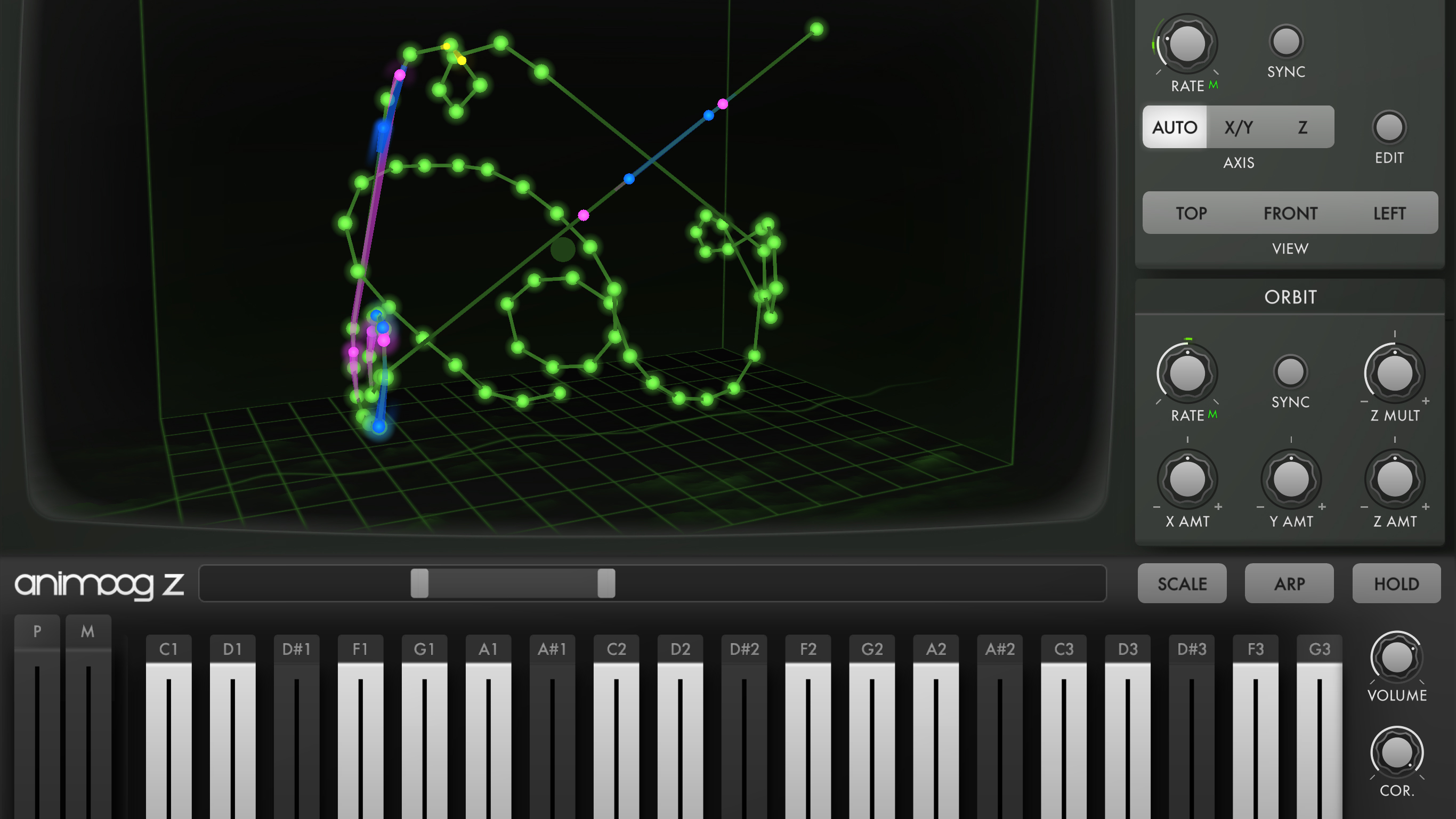
Animoog Z
Animoog Z builds on pioneering digital synthesizer Animoog, which married arresting visuals, rich Moog sounds, and an intuitive interface that let even beginners make grin-inducing noise with a minimum of effort. This follow-up takes things further, with sounds that now zip around through the X, Y and Z axes.
The setup remains the same. A large space is reserved for a visual interpretation of your sound – all neon green lines, with fluorescent comets flitting around. The keyboard defaults to scales, so what you play always sounds great. And none of this is limited: for free, you can dig into every preset, load thousands of user-defined sounds, and even save custom settings.
A paid tier ($19.99 / £17.99 / AU$30.99) opens up pro-grade connectivity and panes for more heavily manipulating sounds; but even for free, you get a full-featured, great-sounding, beautiful iPad synth.
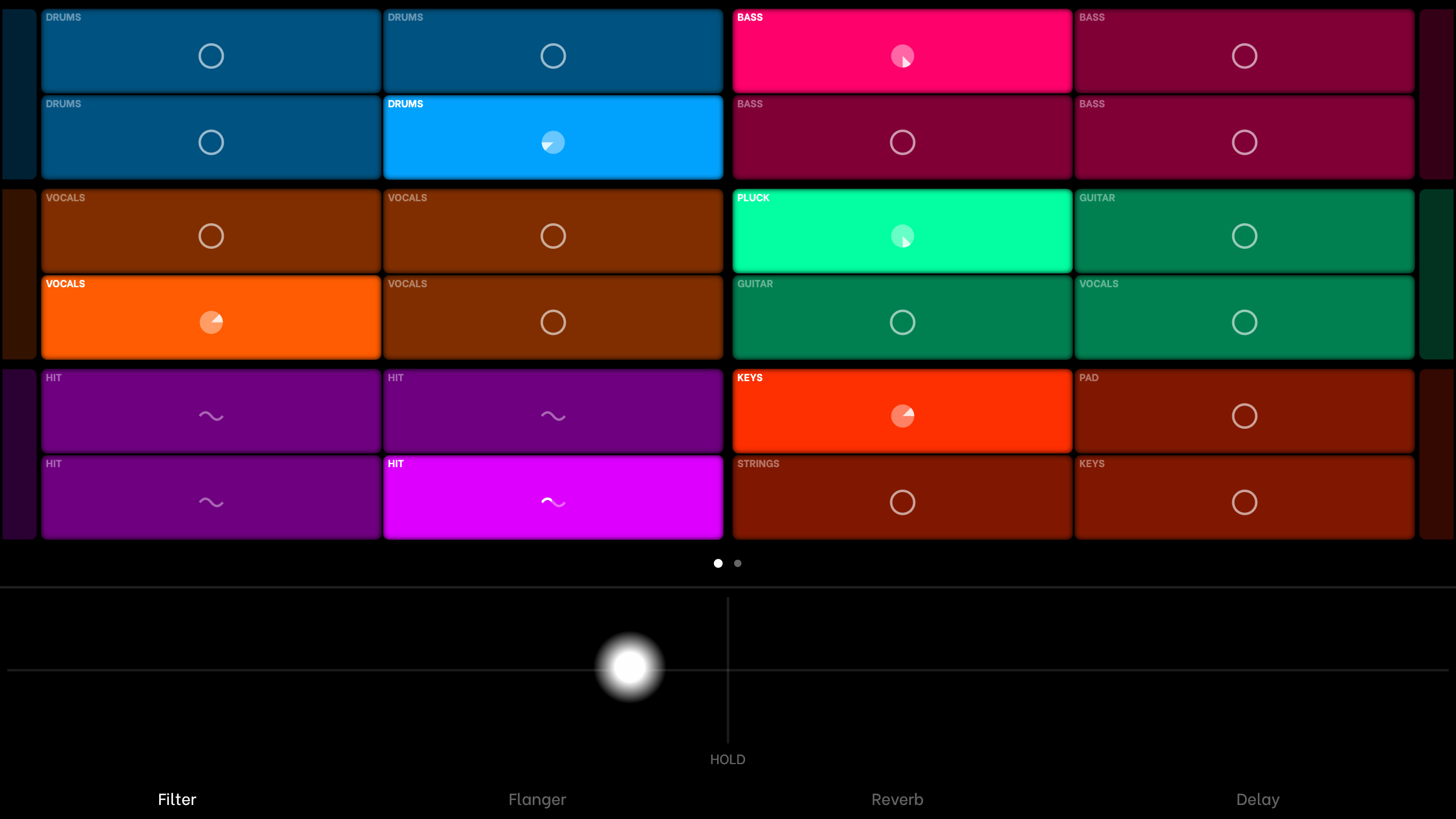
Splash
Splash instantly puts the power of live remixing and DJing at your fingertips, through triggering loops on a grid. Simply select a track from the library, and then tap to kick off drum, bass, synth, and vocal loops. Fire up the effects, and you can make your tune go all strange and wobbly by way of flange, filter, reverb and delay.
Although immensely tappable on the iPad’s display, Splash unfortunately demands you swipe between two screens rather than enabling access to every loop on just one. But other than that, this is an immediate, fun, and entirely free entry point into the world of making music. And should you want to retain a performance for posterity, the means to record and share is also built right in.
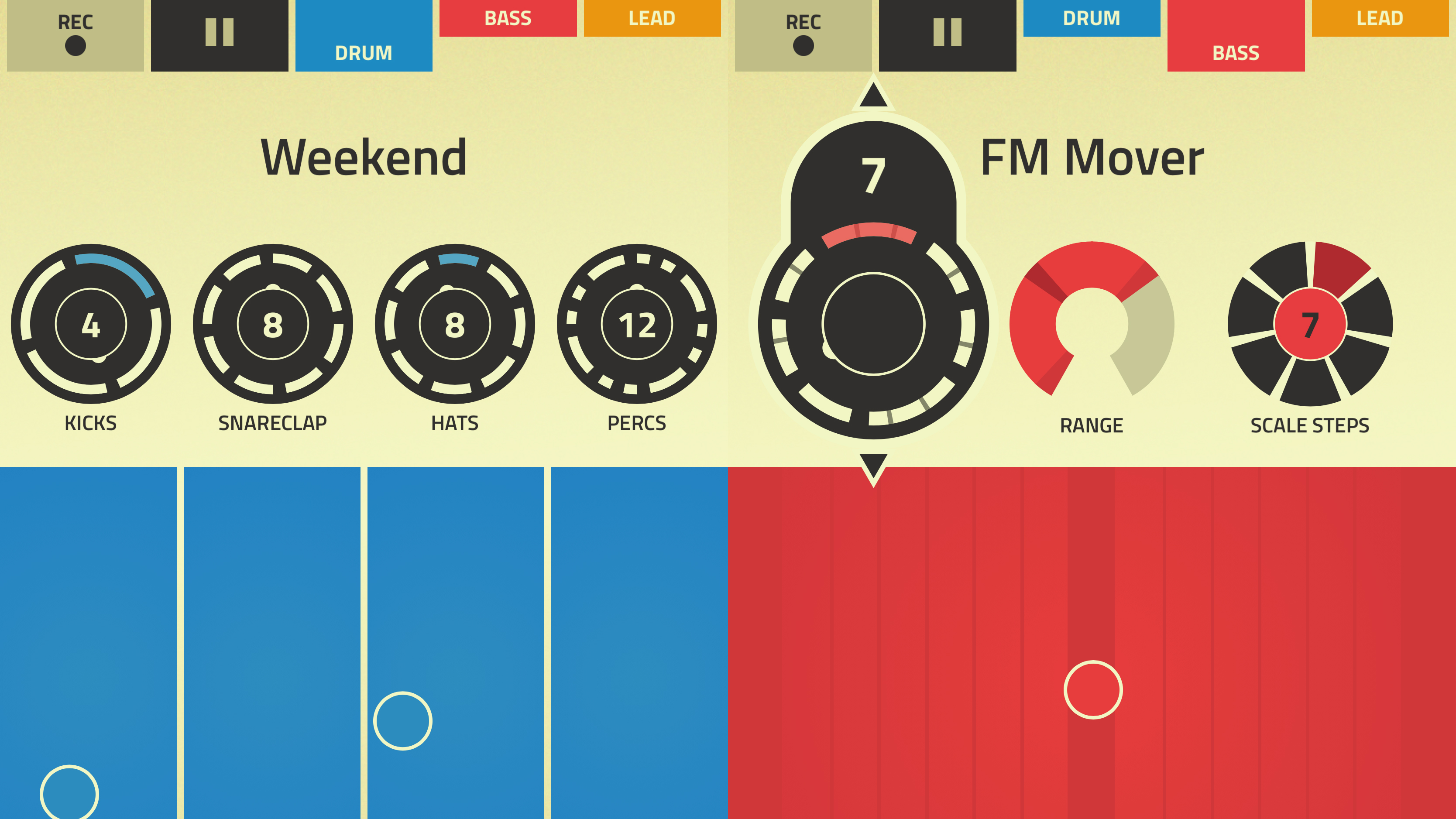
Figure
Figure is an app designed to let you craft beats in seconds. It’s been around for a while on mobile, but the current iteration frees itself from irritating social media cruft. Create an account and you’re good to go.
Although primarily designed for one-fingered operation on a phone, Figure works really nicely as an iPad app. Blown up on the larger display its tactile interface affords you more precision as you tap out beats, construct melodies, and fiddle around with settings.
This isn’t an app for crafting a top-ten hit, note – at most, you’ll end up with eight-bar loops you can export elsewhere. But it’s fun, great for inspiring new ideas, ideal for non-musicians, and perfect for creating bespoke ringtones and alerts for your Apple devices.
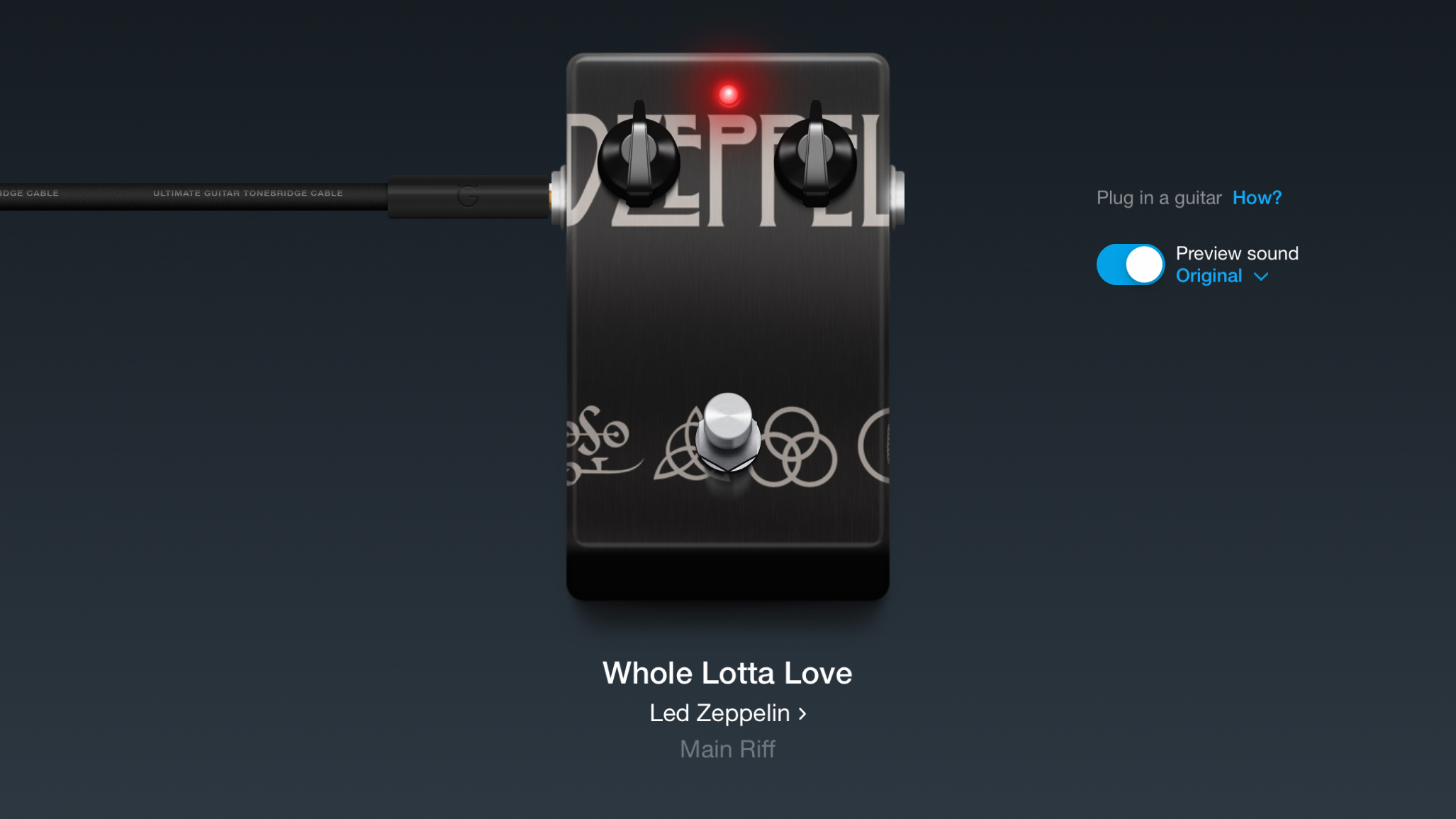
Tonebridge
Tonebridge Guitar Effects has a different spin on the whole ‘turning your iPad into an amp’ thing. Rather than you painstakingly setting up a set of stomp-boxes, and pairing your creation with an amp, Tonebridge offers thousands of presets. Moreover, each one mimics the guitar sounds from an existing song.
This means whether you fancy being Clapton, Hendrix, Pink Floyd, or Led Zeppelin, all you need to do is prod a recommended option, or have a quick search of the catalog.
About half of the presets let you preview the sound using some of the original song’s melody or chords. All can be tweaked to suit, if you know better than the preset when it comes to the precise level of echo a pedal should be emitting – or how much the chosen amp has been cranked up!

djay
djay once existed in various forms on iOS, but is now a free, universal app that invites budding DJs to pay for the level of features that they want.
If you’re not willing to splash out, there’s still plenty to enjoy. You get the full two-deck classic mode, featuring a pair of virtual record decks to spin, a crossfade mixer, scrolling audio waveforms, and a bunch of effects. The interface is intuitive and tactile, although you can delve into AI-driven auto-mixing when manual control seems like too much effort.
Paying subscription IAP unlocks a slew of extra features, including a four-deck pro view, video, MIDI, and high-end mixing. For jobbing DJs, that’s perhaps the only option; for bedroom deck-spinners, the free app’s more than enough – and rather generous, given its high quality.
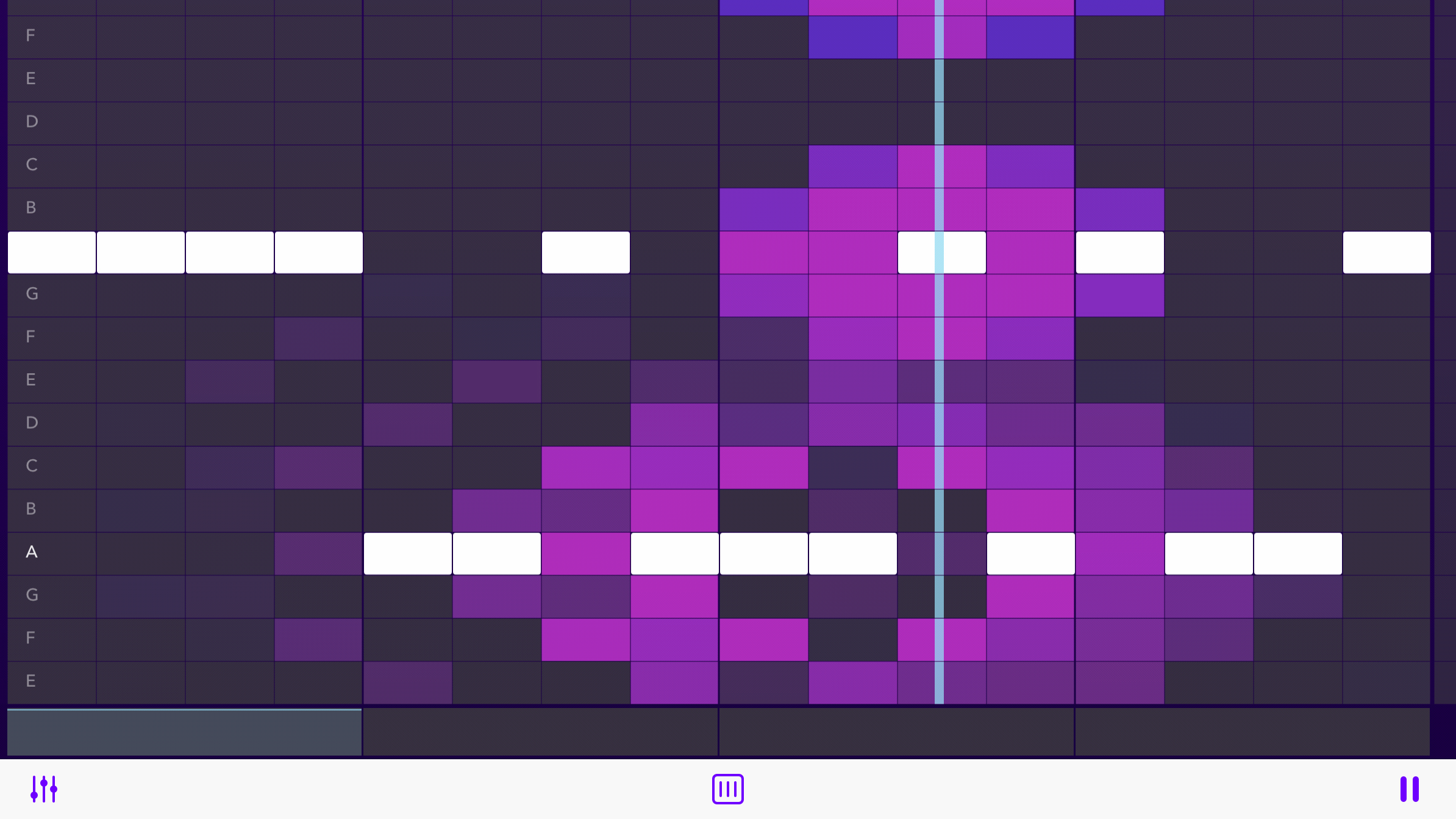
Beatwave
Beatwave makes it easy to create music. You select a voice and tap out notes on a grid. The grid can be set to various scales, ensuring the notes you use always sound good. Go deeper into the app and you can layer/arrange multiple loops, each of which can have a unique sound assigned.
The app looks great, with an explosion of color bursting from each note as the playhead hits it. This is a welcome hangover from the app’s previous incarnation as a simplified digital take on the Yamaha Tenori-on.
The more conventional redesign elsewhere robs Beatwave of some immediacy and playfulness regarding the play surface, although accessing all of its features is now a lot more coherent. Overall, it’s a good bet for beginners but also musicians looking for a fun sketchpad.
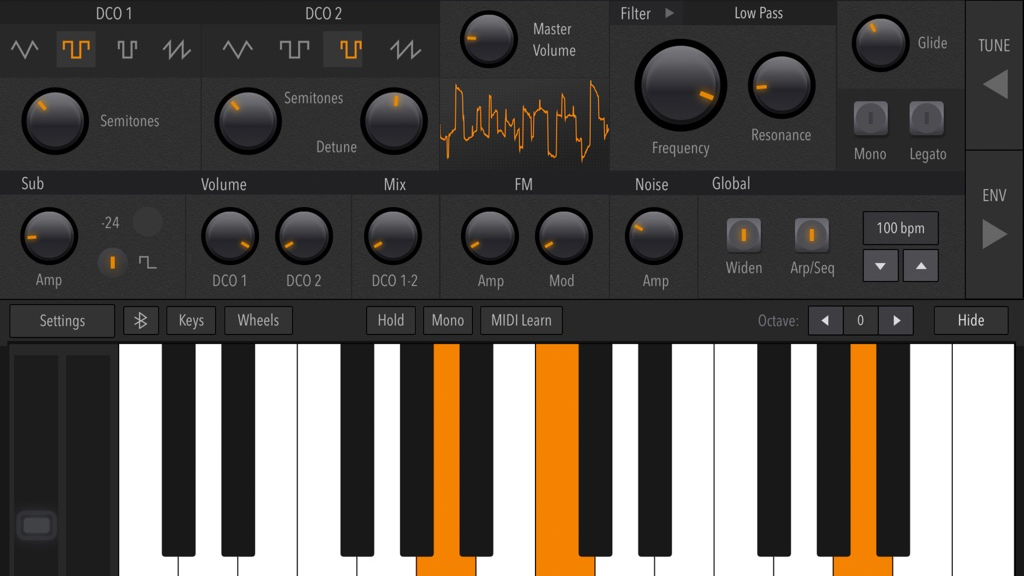
AudioKit Synth One Synthesizer
AudioKit Synth One Synthesizer is an iPad synth bursting at the seams with dials to twiddle, buttons to push, and all kinds of exciting noises that blast forth from your speakers.
Even if you’re not overly musically inclined, there’s fun to be had here by selecting presets - many of which use a built-in user-friendly sequencer, so you can fire off a melody by holding down a single key. There’s loads for musicians to delve into, including Audiobus and IAA support, customizable filters, and touchpad play surfaces.
It’s hugely impressive and the sort of thing you’d usually expect to set you back north of 30 bucks, so it’s all the more surprising that Synth One is entirely free from ads and IAP - and that will always be the case, given that it’s also an open-source project.
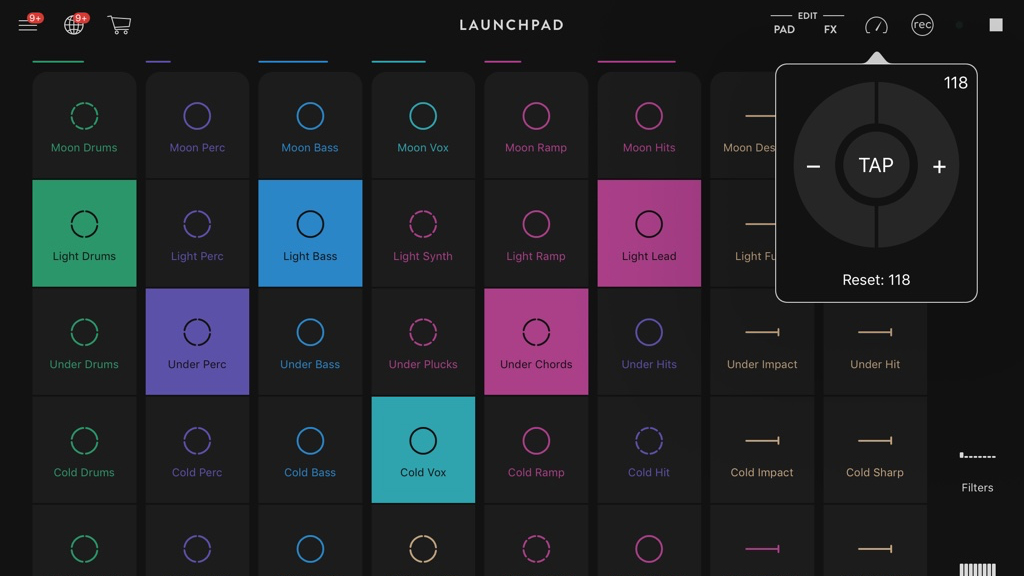
Novation Launchpad
Novation Launchpad is about remixing electronic music using a grid of loops. For the beginner, it’s a friendly, intuitive introduction to music-making. You load a genre and just tap away, safe in the knowledge everything will always sound great. You can even record live mixes and share them with friends.
There’s depth to Novation Launchpad as well – effects to apply, filters to experiment with, and the option to mix and match pad sounds. If you’re prepared to dip into your wallet, you can take things much further, importing your own audio files and working with a larger range of effects.
On iPad, you can buy all of these things – and a MIDI sync feature – for a one-off $14.99/£14.99/$AU22.99 IAP. But even if you stick to the free version, Novation Launchpad proves to be suitably noisy fun.
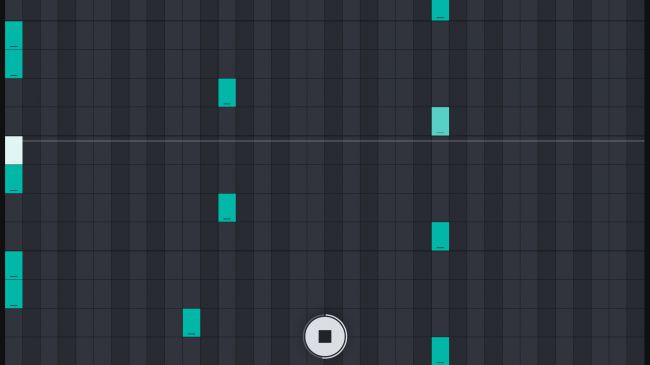
Auxy Music Studio
The thinking behind Auxy Music Studio is that music-making - both in the real world and software - has become too complicated. This app therefore strives to combine the immediacy of something like Novation Launchpad's loop triggers with a basic piano roll editor.
For each instrument, you choose between drums and decidedly electronic synths. You then compose loops of between one and four bars, tapping out notes on the piano roll's grid. Subsequent playback occurs on the overview screen by tapping loops to cue them up.
For those who want to go a bit further, the app includes arrangement functionality (for composing entire songs), along with Ableton Link and MIDI export support. Auxy's therefore worth a look for relative newcomers to making music and also pros after a no-nonsense scratchpad.
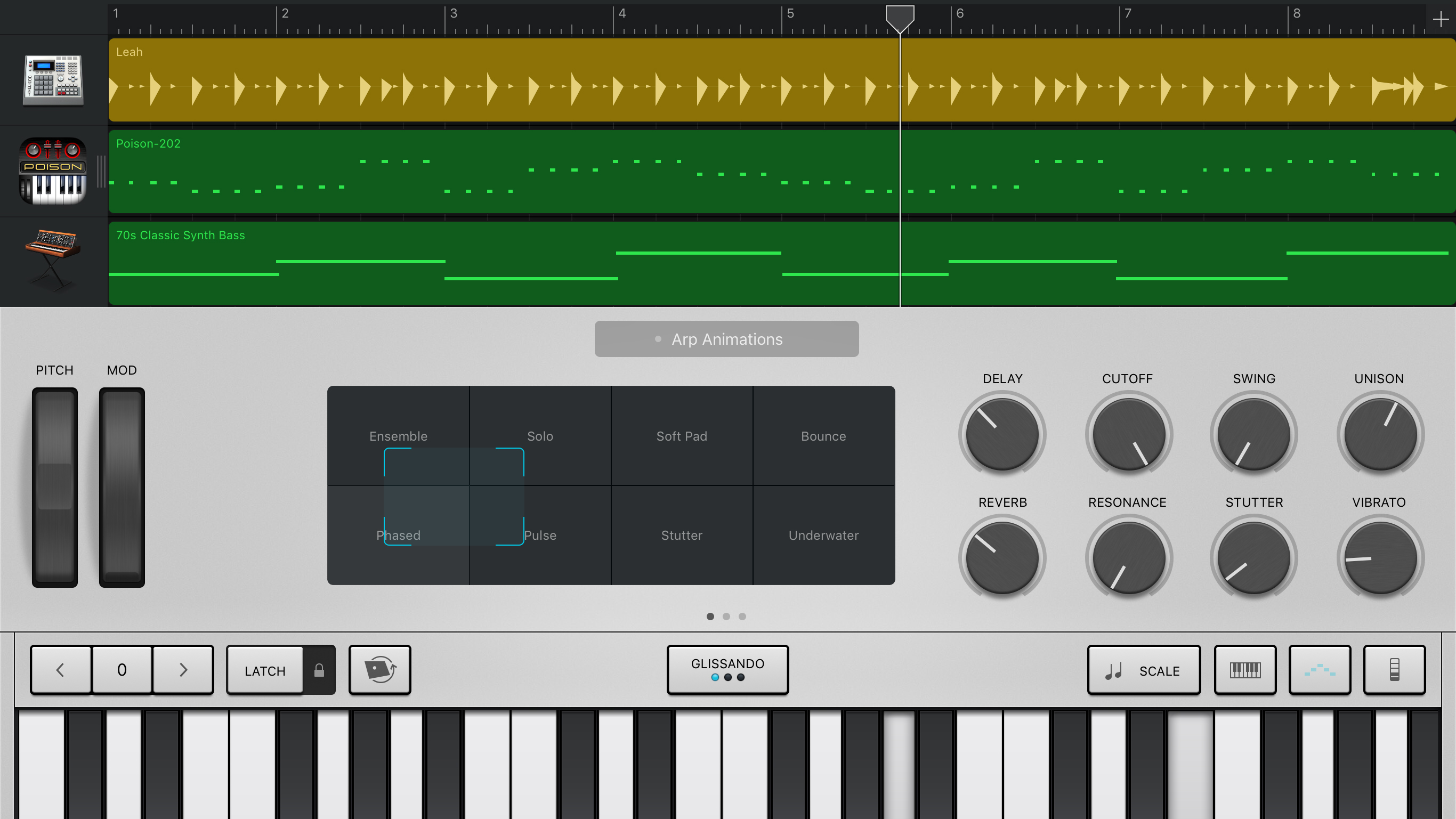
Garageband
On an iPhone, music-making app GarageBand is mightily impressive, but on iPad, the extra space proves transformative. In being able to see more at any given time, your experience is more efficient and enjoyable, whether you’re a beginner tapping the grid view to trigger loops, a live musician tweaking a synth on stage, or a recording artist delving into audio waveforms and MIDI data.
Apple’s app also cleverly appeals to all. Newcomers can work with loops, automated drummers, and piano strips for always staying in key. Pros get seriously impressive track controls with configurable effects, multi-take recording, and Audio Unit support for bringing favorite synths directly into GarageBand.
If you don’t feel terribly creative sitting in front of a PC, GarageBand’s the perfect way to unleash your Grammy-winning songwriter in waiting.
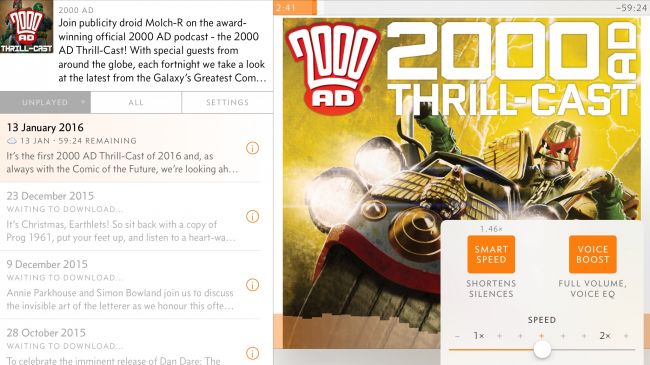
Overcast
Podcasts are mostly associated with small portable devices - after all, the very name is a mash-up of 'iPod' and 'broadcast'. But that doesn't mean you should ignore your favourite shows when armed with an iPad rather than an iPhone.
We're big fans of Overcast on Apple's smaller devices, but the app makes good use of the iPad's extra screen space, with a smart two-column display. On the left, episodes are listed, and the current podcast loads into the larger space on the right.
The big plusses with Overcast, though, remain playback and podcast management. It's the one podcast app we've used that retains plenty of clarity when playback is sped up; and there are clever effects for removing dead air and boosting vocals in podcasts with lower production values.
Playlists can be straightforward in nature, or quite intricate, automatically boosting favourites to the top of the list, and excluding specific episodes. And if you do mostly use an iPhone for listening, Overcast automatically syncs your podcasts and progress, so you can always pick up where you left off.
Current page: The best free music and audio apps for iPad
Prev Page The best free kids apps for iPad Next Page The best free office and writing apps for iPadSign up for breaking news, reviews, opinion, top tech deals, and more.